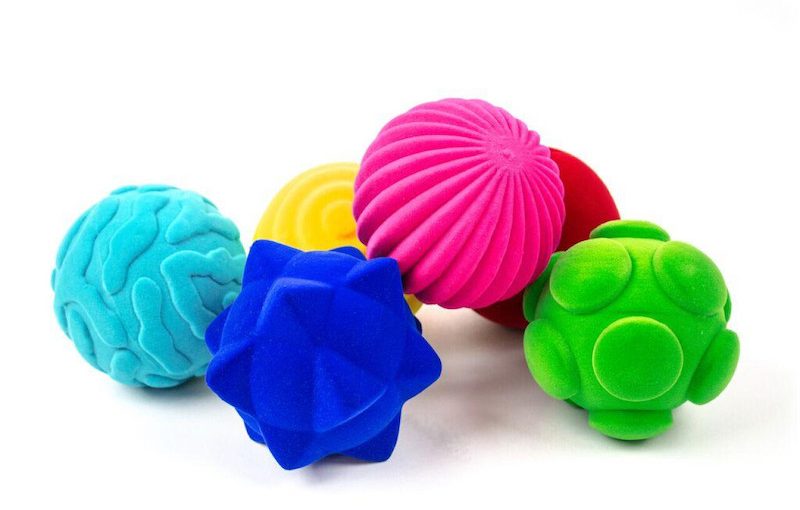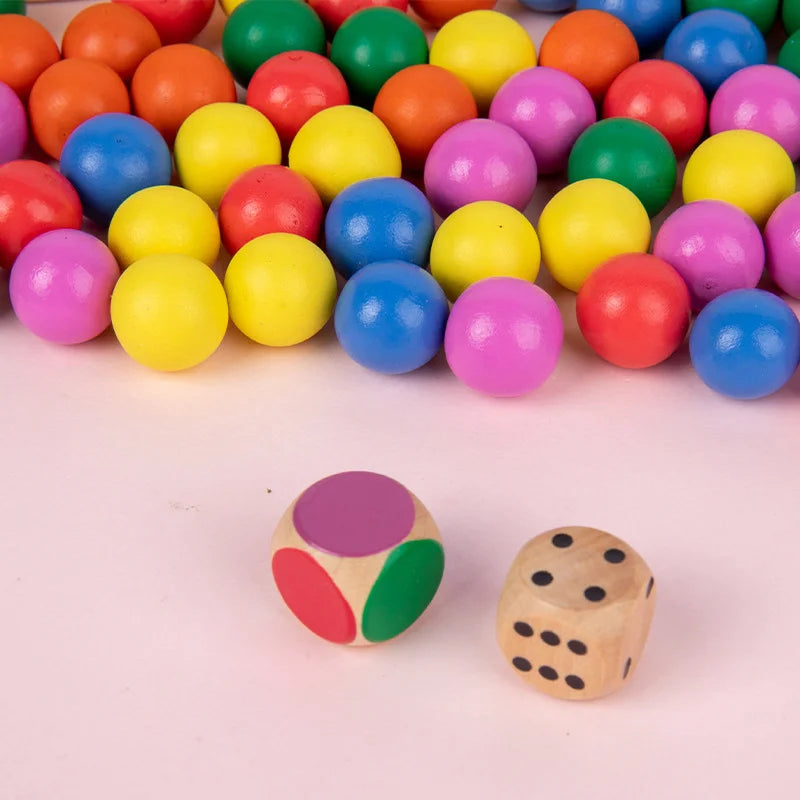The Science Behind Tactile Stimulation
Tactile stimulation refers to the sensation of touch and texture that activates the nervous system. Our bodies detect touch through specialized receptors in the skin. These receptors send signals to the brain for processing. Sensory ball with spikes are designed to stimulate these receptors more intensely than a smooth object might. With their unique texture, they can trigger a stronger sensory response.
When the skin touches the spikes on a sensory ball, the receptors respond to the pressure and texture. This can help to enhance sensory awareness. It also promotes neurological development. It’s a form of sensory play that can be important for people of all ages, especially those with sensory processing issues.
Using a sensory ball with spikes can improve tactile discrimination. This means the ability to feel, recognize, and interpret different textures and pressures. For individuals who need more tactile feedback, the spikes on the balls provide just that. They create a sensory experience that can be both therapeutic and enjoyable. Regular use of these balls can make a big difference in how the body processes tactile information.
In short, tactile stimulation through the use of spiked sensory balls is a simple, yet effective way to activate the body’s sensory system. It harnesses one of our fundamental senses to encourage development and aid in sensory integration.

Benefits of Tactile Stimulation with Spiked Sensory Balls
Tactile stimulation with spiked sensory balls offers several benefits. These include enhanced sensory awareness and neurological development. For individuals with sensory processing issues, such benefits are particularly important. Here’s a breakdown of the key advantages:
- Improved Sensory Processing: The textured design of a sensory ball with spikes encourages the brain to process a variety of tactile information. This can be crucial for those who struggle with sensory integration.
- Stress Relief: Engaging in sensory play with these balls can help reduce stress and anxiety. It provides a physical outlet for emotions and creates a calming effect.
- Physical Therapy Aid: Spiked sensory balls are also used in physical therapy. They can help improve grip strength and dexterity as well as stimulate muscle response.
- Better Focus and Concentration: Children and adults alike may benefit from improved concentration. Using a sensory ball during activities can help maintain focus and attend to tasks.
- Sensory Development in Children: For young children, sensory balls with spikes aid in the exploration of textures and pressures. This supports their natural curiosity and fosters learning.
- Assistance for Individuals with Autism or ADHD: Spiked sensory balls can be particularly helpful for people with autism or ADHD. They provide a consistent sensory stimulus that can help manage symptoms.
Overall, the use of a sensory ball with spikes can serve multiple purposes, from therapeutic to educational. Incorporating them into a routine can lead to significant improvements in tactile sensitivity and overall wellbeing.
How Spiked Sensory Balls Contribute to Sensory Integration
Sensory integration is a crucial process where the brain organizes and interprets sensory inputs. Spiked sensory balls play an integral role in this. The uneven surface of a sensory ball with spikes challenges the sensory system in a unique way. When used in various activities, they can greatly enhance sensory integration, especially for those with sensory processing disorders.
Importance in Sensory Therapy
In sensory therapy, therapists use spiked sensory balls for hands-on stimulation. This tactile input promotes neural connections within the brain’s sensory pathways. Regular use can lead to better sensory processing. This makes daily tasks easier for individuals with sensory challenges.
Impact on Sensory Processing Disorder
People with Sensory Processing Disorder (SPD) often struggle to integrate sensory information. Sensory balls with spikes provide targeted stimulus which can help their nervous system to adapt and respond more appropriately to touch.
Enhancing Body Awareness
Spiked sensory balls also improve proprioception, which is how the body senses itself in space. Grasping, rolling, or applying pressure with these balls helps users understand where their body parts are without looking.
Facilitating Occupational Therapy
Occupational therapists often incorporate spiked sensory balls into their sessions. These balls assist in developing fine motor skills. They can also strengthen the user’s ability to focus and remain engaged during therapy.
Throughout their use, sensory balls with spikes contribute significantly to the sensory integration process. They serve as tools that are not only therapeutic but also enjoyable, leading to better sensory health and function.
The Various Types of Spiked Sensory Balls and Their Uses
Different spiked sensory balls cater to various needs and preferences. They come in different sizes, textures, and levels of firmness. Here’s an overview of the common types and their uses:
- Soft Spiked Balls: Ideal for beginners or those with very sensitive skin. These balls are usually made of pliable materials and are gentle on the touch.
- Medium Spiked Balls: These offer a moderate level of stimulation and are good for regular use in therapy or play. They suit most individuals.
- Firm Spiked Balls: Best for those who require intense pressure to feel sensory input. Often used by therapists for deep pressure stimulation.
- Textured Spiked Balls: Some balls have varied spike lengths or patterns. These provide a more complex sensory experience and can help with discrimination of different textures.
- Vibrating Spiked Balls: They combine touch with vibration to enhance the sensory experience. Useful for individuals who benefit from additional sensory input.
- Large Spiked Balls: Suitable for bigger hands or for activities that involve rolling or throwing. They also offer a full-body experience.
- Small Spiked Balls: Perfect for fine motor skill exercises or when targeting specific small areas.
Each type of sensory ball with spikes is designed for certain uses. Soft spiked balls might be part of a stress-relief kit. Medium ones often find their place in school sensory corners. Firm ones are commonly used in physical therapy sessions. Textured balls may be featured in occupational therapy to refine tactile perception, while vibrating balls might be used in sensory rooms. Large balls are ideal for group activities and coordination exercises. Small balls, on the other hand, are great for individual hand therapy or discreet use.
Understanding the different types of spiked sensory balls and their uses helps in selecting the right tool for specific sensory needs. It is crucial to match the ball type to the user’s tactile sensitivity and the desired outcome to ensure effective and safe sensory play.
Recommended Activities with Spiked Sensory Balls
Integrating sensory ball with spikes into various activities can be both fun and beneficial. Here are some recommended activities that leverage the unique properties of these tactile tools:
- Catch and Throw: Playing catch with a sensory ball can enhance hand-eye coordination. It’s a simple, effective exercise for all ages.
- Balance Training: Use the ball as a balancing tool. Try balancing on one foot while holding it, or place it under your hands or feet during a workout.
- Pressure Work: Apply pressure using the ball on different body parts. It’s useful for muscle relaxation and stimulating sensory receptors.
- Tracking Movements: Roll the ball and follow its path with your eyes. This encourages visual tracking skills.
- Texture Identification: Close your eyes and feel the spikes. Try to describe the texture or guess the ball type, enhancing tactile awareness.
- Massage: Gently roll the ball over your body. It can serve as a massager to relieve muscle tension and stimulate circulation.
- Finger Strength: Squeeze the ball in your hand. It’s a great way to build finger and grip strength.
- Relaxation Techniques: Use the sensory ball in stress relief routines. The act of manipulating the spikes can be calming.
- Creative Play: Incorporate the ball into imaginative play scenarios. It may serve as a prop that also stimulates the senses.
- Fine Motor Skills Development: Practice picking up the ball with thumb and fingers. It’s especially good for children and anyone looking to improve fine motor skills.
Remember to choose activities that align with your sensory needs and preferences. The key is consistency and enjoyment in the activities you select.
Selecting the Right Spiked Sensory Ball for Your Needs
Choosing the right spiked sensory ball involves considering several factors. First, think about the user’s tactile sensitivity. Someone with high sensitivity may prefer a soft spiked ball. Those with less sensitivity might need a firmer option for better feedback. Next, consider the purpose of the ball. For stress relief, a soft or medium ball typically works well. For physical therapy, a firmer ball may be better. Lastly, size matters. Large balls suit full-body activities, while small ones are best for hand exercises.
When selecting, it is also useful to refer to an occupational therapist for guidance. They can assess the user’s needs and recommend the most suitable type. Experimenting with different balls can also be helpful. Try various types and see what feels best and meets therapeutic goals. Remember, the goal is to enhance sensory processing and comfort. Thus, choosing the right ball is key for effective sensory stimulation.
Tips for Using Spiked Sensory Balls Safely and Effectively
Utilizing spiked sensory balls properly is vital for safety and to get the best results. Here are some tips to ensure their effective use:
- Start Slowly: If you’re new to using a sensory ball with spikes, begin with light touch. Allow your body to adjust to the sensation.
- Duration Matters: Don’t overdo it. Start with short sessions and increase gradually as comfort grows.
- Monitor Skin Reaction: Some people may have sensitive skin. Watch for any signs of irritation and stop if discomfort occurs.
- Clean the Balls Regularly: Hygiene is important. Wash the balls with soap and warm water to keep them sanitary.
- Supervise Children: Always watch kids when they use spiked sensory balls. Ensure they’re using them correctly.
- Consult Professionals: Before starting any therapeutic use, speak to an occupational therapist. They can give advice tailored to individual needs.
- Listen to Your Body: Pay attention to how your body feels during use. If a ball feels too harsh, switch to a softer type.
- Incorporate Variety: Don’t stick to one type or activity. Mix things up to challenge the sensory system in different ways.
By following these tips, you can use spiked sensory balls to enhance tactile stimulation effectively while maintaining safety.
Spiked Sensory Balls in Different Therapeutic Settings
Spiked sensory balls are versatile and find their use in numerous therapeutic settings. Their ability to enhance tactile stimulation makes them a valuable tool in various forms of therapy.
Physical Therapy Sessions
In physical therapy, these balls aid in developing strength and mobility. They help patients regain muscle function and coordination.
Occupational Therapy Tools
Occupational therapists use them to work on fine motor skills and sensory integration. They can make everyday tasks easier for their clients.
Stress Reduction Techniques
For those looking to manage stress, sensory balls with spikes offer a way to release tension. They are used in sessions focused on relaxation.
Child Development and Play Therapy
Children benefit from the sensory feedback during play. It supports growth and learning, particularly in sensory processing.
Autism and ADHD Support
Individuals with autism or ADHD find the consistent feedback from these balls helpful. It can calm and aid in managing symptoms.
Rehabilitation Programs
Rehabilitation centers employ spiked sensory balls for patients recovering from injuries. They stimulate nerves and retrain the brain.
Home Use for Self-Care
Many people use these balls at home for self-care routines. They improve sensory processing and provide therapeutic benefits.
In each of these settings, the sensory ball with spikes is chosen to match the user’s needs. The texture and firmness of the ball are considered for each individual’s tactile sensitivity. With their various applications, spiked sensory balls contribute meaningfully to health and well-being across different therapy disciplines.


